

25.3.1999 Mikko Kokkonen, 33015p


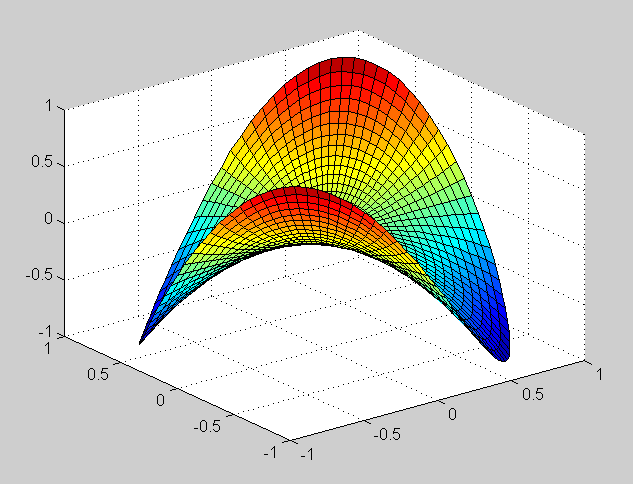
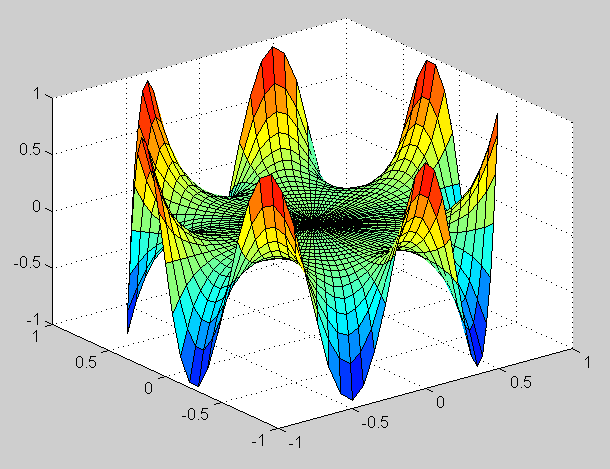
u(r, theta) = 1 + r sin(theta)
max u(r, theta) = 1 + max r max sin(theta) = 2.The maximum is obtained when r=1, and sin(theta)=1.
min u(r, theta) >= 1 - r >= 0.The minimum 0 is obtained when r=1 and sin(theta) = -1.
Verification of the mean value property: we compute the integral of u(r, t) along the circle C_r:
1 / (2 pi r) int_{C_r} u(r, t) dS, where dS = r dt
= 1 / (2 pi r) int_0^{2 pi} (1 + r sin(t)) r dt
= 1 / (2 pi) [ int_0^{2 pi} dt + r int_0^{2 pi} sin(t) dt ]
= 1 = u(0, t)
In addition to using the Cooper's matlab-script dirch.m the solution was also computed with numerical integration using the Poisson's kernel. The matlab-code calculates the integral with Simpson's rule and uses the same f.m for boundary values as dirch.m. Surface plots of the solution:
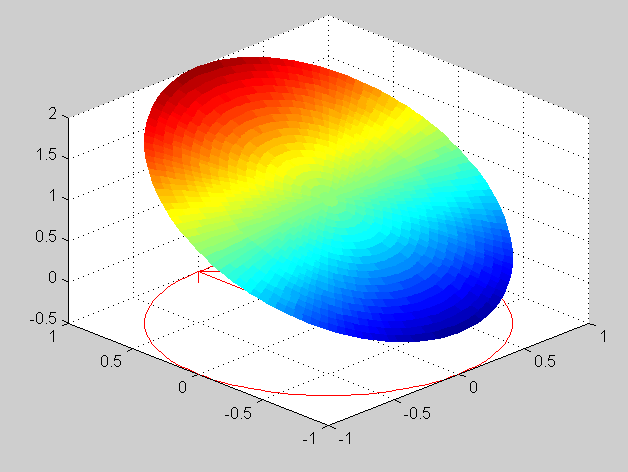
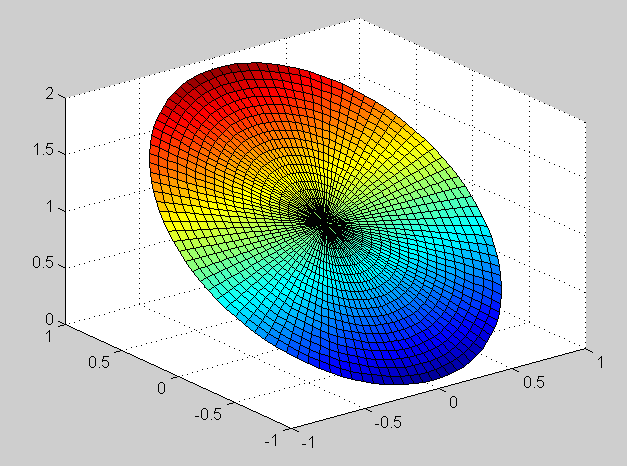
f(t) = 2 + sin(t) / 2 - cos(t) / 10 + sin^2 (t) + cos (4t)
= 2 + sin(t) / 2 - cos(t) / 10 + 1/2 - cos(2t) / 2 + cos(4t)
= 5/2 + sin(t) / 2 - cos(t) / 10 - cos(2t) / 2 + cos(4t)
The Fourier coefficients of f are: A_0 = 5, A_1 = -1/10, A_2 = - 1/2, A_3 = 0,
A_4 = 1, A_n = 0 if n > 4, B_1 = 1/2, B_n = 0 if n > 1. The solution is
u(r, theta) = 5/2 + r (sin(theta) / 2 - cos(theta) / 10) - r^2 cos(2 theta) / 2 + r^4 cos(4 theta)The verification of the mean value property goes in the same way as in the previous exercise. We can note that integrals of sin(n t) and cos(n t) from 0 to 2 pi are zero, because the integral function is 2 pi -periodic.
Maximum value (from the numerical solution) is 4.5 and minimum is 1.0603, their location is on the boundary as can be seen in the surface plots of the solution:
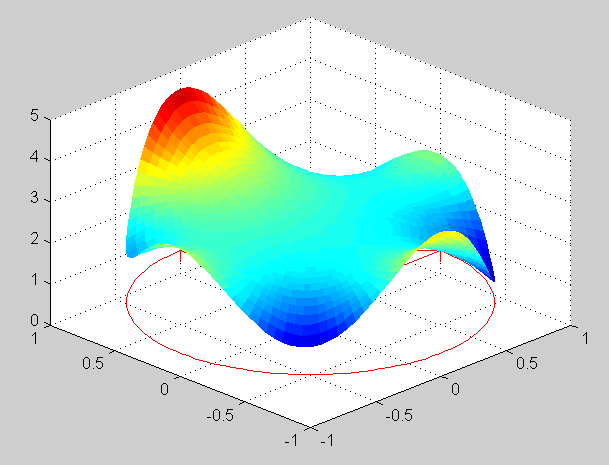

f(t) = cos(t) + 4 sin^3(t)
= cos(t) + 4 sin(t) [1 - cos^2(t)]
= cos(t) + 4 sin(t) + 2 sin(t) [cos(2t) - 1]
= cos(t) + 2 sin(t) + sin(3t) - sin(t)
= cos(t) + sin(t) + sin(3t).
The Fourier coefficients of f are: A_0 = 0, A_1 = 1, A_n = 0 if n>1, B_1 = 1,
B_2 = 0, B_3 = 1, B_n = 0 if n>3. The solution is:
u(r, theta) = r [cos(theta) + sin(theta)] + r^3 sin(3 theta)Verification of the mean value property is done in the same way as in previous exercises. The maximum of the solution is 4.0405 and the minimum is -4.0405. Surface plots of the solution:
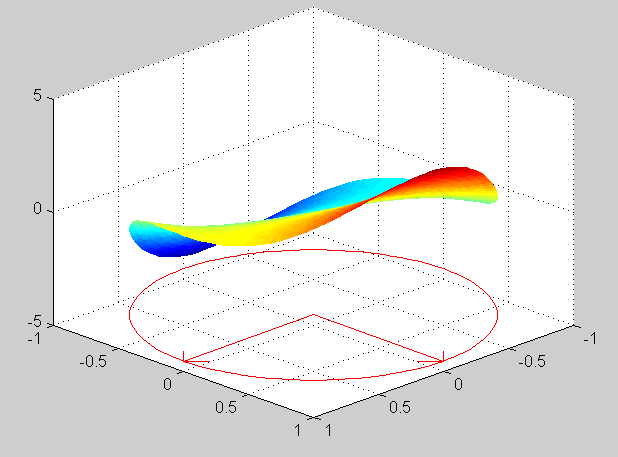
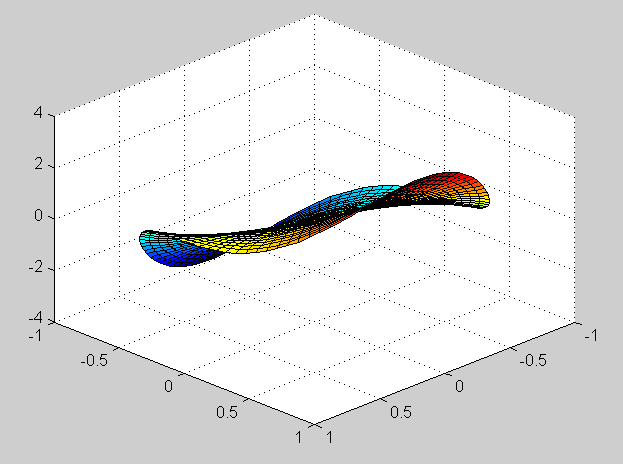

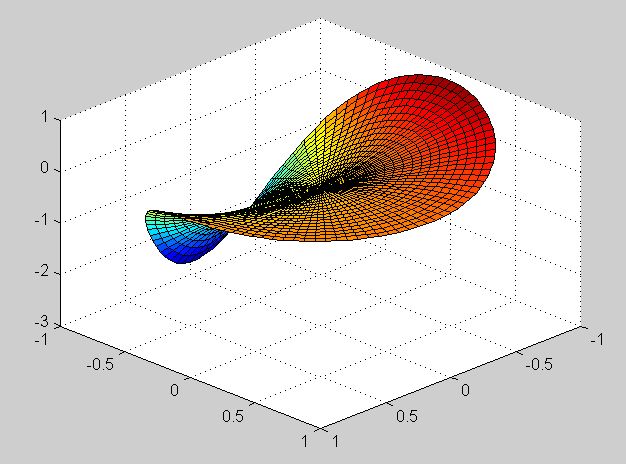
u(0,0) = int_0^2 pi f(theta) d theta
= erf(pi) / (2 sqrt(pi)) - 3 [erf(pi / sqrt(2)) + erf(3 pi/sqrt(2))] /
(4 sqrt(pi))
approx -0.3179
Value of the solution provided by dirch.m at (0, 0) is -0.3157
n rho^{n-1} a_n = A_n and n rho^{n-1} b_n = B_n
so that
a_n = A_n / ( n rho^{n-1} ) and b_n = B_n / ( n rho^{n-1} )
The compatibility condition for g(theta) is obtained e.g. from TW Lemma
7.1, which says that if u is harmonic, then du / dn integrated along the
boundary is zero. For g(theta) this means that int_pi^pi g(theta) dtheta =
0. If the series expansion for g(theta) converges uniformly, we may
integrate term by term and obtain a condition that A_0 = 0.
Since the boundary conditions are for the first derivative of u, the solution is unique up to a constant value.